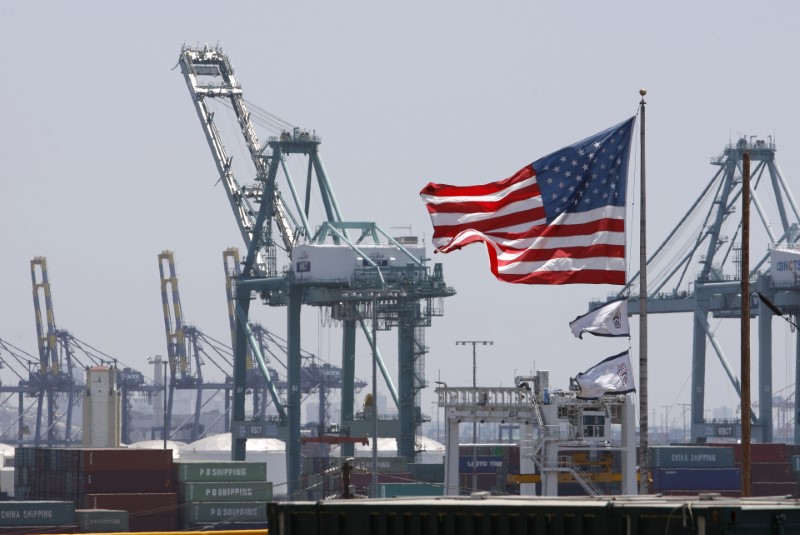 © Reuters. A U.S. flag flies at the Port of Los Angeles in Los Angeles
© Reuters. A U.S. flag flies at the Port of Los Angeles in Los AngelesDANANG, Vietnam (Reuters) – Ministers from Asia-Pacific countries extended talks on Wednesday in the face of U.S. demands for changes to the language used concerning issues such as free trade and protectionism, officials at the talks said.
Trade and foreign ministers from Asia Pacific Economic Cooperation (APEC) countries had been discussing wording for a leaders’ statement to be made at a summit that will include U.S. President Donald Trump and his counterparts from China, Japan, Russia, Canada, Australia and other APEC members.
A news conference planned after the meeting was first delayed, then canceled. An announcement said it would be rescheduled because “the ministerial meeting will extend until tomorrow morning”.
“It is an issue of language for the statement,” said one official, noting that the discussion was similar to that which took place at G-20 meetings where the Trump administration demanded changes to the usual language.
Officials at the APEC meeting in the Vietnamese resort of Danang said the sticking points were wording on free trade, fighting protectionism and climate change.
“The U.S. opposes multilateral trade agreements and the other economies are not happy,” another official said.
A U.S. official did not respond immediately to a request for comment.
Last year, the APEC leaders’ statement affirmed a commitment to open markets and fighting “all forms of protectionism”. They also agreed to enhance cooperation on policies to address “the relationship between food security and climate change.”
In May, APEC trade ministers scrapped a plan to issue a joint statement because of differences between the United States and the rest of APEC over the language on protectionism.
Fusion Media or anyone involved with Fusion Media will not accept any liability for loss or damage as a result of reliance on the information including data, quotes, charts and buy/sell signals contained within this website. Please be fully informed regarding the risks and costs associated with trading the financial markets, it is one of the riskiest investment forms possible.
Source: Investing.com




























